8 Health Benefits Of Watercress, Nutrition, And Side Effects
Level up your health by adding this nutrient-dense vegetable to your daily diet.
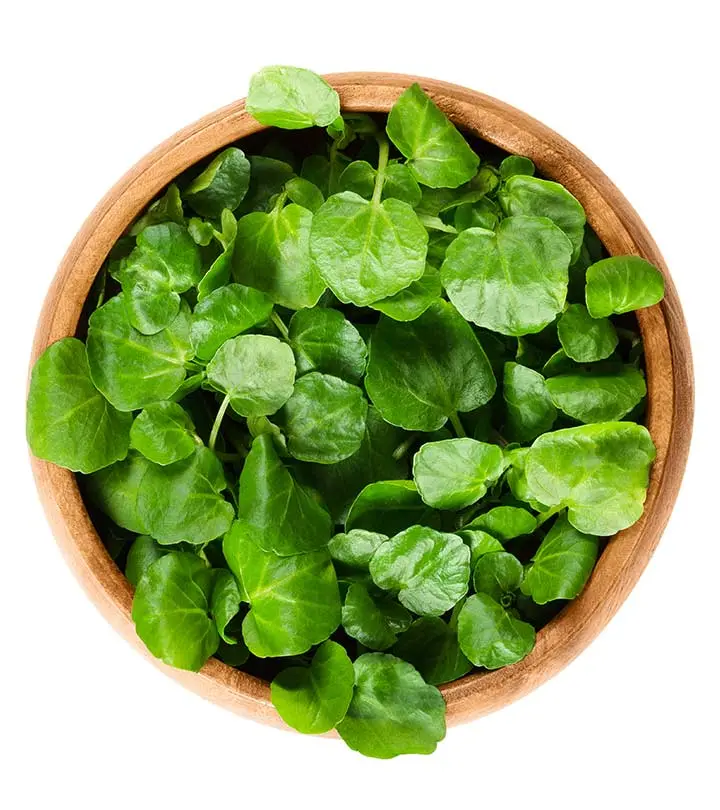
Image: Shutterstock
The numerous health benefits of watercress will make you want to eat it more often. Watercress is a nutrient-rich food and is a good source of vitamins A, C, and K. Evidence suggests that it was an important part of the Roman soldiers’ diet.
There are powerful polyphenolsi A class of naturally occurring organic compounds found largely in fruits and vegetables with disease-fighting properties. in watercress that protect against free radical damage and chronic diseases (1). So adding it to your diet could be one of the healthiest choices you can make. This article discusses the benefits of watercress, its nutritional profile, and any potential side effects. Keep reading.
 Know Your Ingredient: Watercress
Know Your Ingredient: WatercressWhat Is It?
A leafy perennial plant that belongs to the Brassicaceae cabbage family.
What Are Its Benefits?
May boost immunity, support heart and bone health, and aid in diabetes treatment.
Who Can Consume It?
Considered safe for consumption in general.
How Often?
As part of a daily diet.
Caution
Those with thyroid- and kidney-related issues should check with a doctor before consuming it.
In This Article
What Is The Nutritional Profile Of Watercress?
Watercress is a nutrient-dense vegetable. The US Centers for Disease Control and Prevention ranks watercress at number one on the list of powerhouse fruits and vegetables (2).
One cup of watercress (34 grams) contains just 4 calories. It contains vitamin K (a whopping 106% of the RDA), vitamin C (24% of the RDA), and vitamin A (22% of the RDA). The other nutrients this vegetable offers are listed in the table below.
| Nutrient | Unit | 1Value per 100 g | 1 cup, chopped = 34.0g | 1 sprig = 2.5g | 10.0 sprigs = 25.0g |
|---|---|---|---|---|---|
| Water | g | 95.11 | 32.34 | 2.38 | 23.78 |
| Energy | kcal | 11 | 4 | 0 | 3 |
| Protein | g | 2.3 | 0.78 | 0.06 | 0.57 |
| Total lipid (fat) | g | 0.1 | 0.03 | 0 | 0.03 |
| Carbohydrate, by difference | g | 1.29 | 0.44 | 0.03 | 0.32 |
| Fiber, total dietary | g | 0.5 | 0.2 | 0 | 0.1 |
| Sugars, total | g | 0.2 | 0.07 | 0.01 | 0.05 |
| Minerals | |||||
| Calcium, Ca | mg | 120 | 41 | 3 | 30 |
| Iron, Fe | mg | 0.2 | 0.07 | 0.01 | 0.05 |
| Magnesium, Mg | mg | 21 | 7 | 1 | 5 |
| Phosphorus, P | mg | 60 | 20 | 2 | 15 |
| Potassium, K | mg | 330 | 112 | 8 | 82 |
| Sodium, Na | mg | 41 | 14 | 1 | 10 |
| Zinc, Zn | mg | 0.11 | 0.04 | 0 | 0.03 |
| Vitamins | |||||
| Vitamin C, total ascorbic acid | mg | 43 | 14.6 | 1.1 | 10.8 |
| Thiamin | mg | 0.09 | 0.031 | 0.002 | 0.022 |
| Riboflavin | mg | 0.12 | 0.041 | 0.003 | 0.03 |
| Niacin | mg | 0.2 | 0.068 | 0.005 | 0.05 |
| Vitamin B-6 | mg | 0.129 | 0.044 | 0.003 | 0.032 |
| Folate, DFE | µg | 9 | 3 | 0 | 2 |
| Vitamin A, RAE | µg | 160 | 54 | 4 | 40 |
| Vitamin A, IU | IU | 3191 | 1085 | 80 | 798 |
| Vitamin E (alpha-tocopherol) | mg | 1 | 0.34 | 0.03 | 0.25 |
| Vitamin K (phylloquinone) | µg | 250 | 85 | 6.2 | 62.5 |
Source: USDA National Nutrient Database, Watercress, raw
Key Takeaways
- The anti-inflammatory properties of watercress can aid in promoting heart health.
- Watercress may help in promoting bone health and prevent fractures, owing to its high vitamin K content.
- It is rich in numerous antioxidants, such as vitamin C and A that can help boost the immunity.
- It can help reduce skin inflammation, thereby promoting skin health.
What Are The Health Benefits Of Watercress?
Watercress is rich in isothiocyanates that may help prevent cancer, boost immunity, and promote hydration.
The nitrates in the vegetable promote heart health and may also enhance your physical performance. Other nutrients in this veggie can help prevent osteoporosisi A skeletal disease in which bones become weak and brittle due to loss of bone density, which increases the risk of fractures. and aid diabetes treatment.
1. May Aid Cancer Prevention
Watercress fights the reactive oxygen species, thereby helping in cancer prevention. Cruciferous vegetables, including watercress, contain organosulfur compounds and isothiocyanates that play a role in this regard (3).
Watercress was also found to suppress the development of breast cancer. This could be attributed to phenylethyl isothiocyanate, a compound in the vegetable. This compound interferes with the function of a protein that plays a role in breast cancer development (4).
This compound was also found to help prevent lung cancer in smokers (5). In addition, watercress was found to enhance the therapeutic effects of cancer radiation therapy (6).
Watercress may also play a role in the prevention of colorectal cancer. In a study, a group of New Zealand population with a high intake of watercress was found to have low rates of colorectal cancer (7).
2. May Promote Heart Health

Reports suggest that nutrient-dense veggies, like watercress, are more likely to protect people from heart disease (2). Studies show that cruciferous vegetables, in general, have cardioprotective properties (8).
These green leafy veggies also contain nitrates, which promote heart health. Dietary nitrates lower blood pressure levels and prevent platelet aggregation. They improve endothelial function and exercise performance in individuals (9). Nitrates achieve this by reducing arterial stiffness and thickness and inflammation (9).
In rat studies, watercress extracts could reduce levels of total cholesterol, triglycerides, and bad cholesterol (10). More human studies are warranted, though.
3. May Aid Diabetes Treatment
There is not a lot of research to support this claim. However, one study states that watercress may have a beneficial effect on serum glucose levels. The study conducted on diabetic rats found that extracts of watercress could lower the levels of both serum glucose and serum cholesterol. These effects, if replicated in humans, can have beneficial effects on individuals with diabetes (11).
People with diabetes also tend to have a higher risk of vascular disorders, including hypertensioni A long-term medical condition in which blood pressure in the arteries is higher than normal and leads to fatigue, muscle tremors, and anxiety. and neuropathy. The nitric oxide in watercress can help alleviate this (12).
The nitric oxide can also reduce the risk of other diabetes complications, like blindness and limb amputations (12).
4. Can Promote Bone Health

Rutin, a flavonoidi A group of natural substances found in many fruits and veggies with beneficial anti-inflammatory and disease-fighting properties. found in watercress, was found to stimulate the formation of osteoblasts (cells that secrete the matrix for bone formation) (13). The vegetable was also found to stimulate bone mineralization, which is an important function to prevent osteoporosis.
The vitamin K in watercress also plays a major role in bone health. Deficiency of this nutrient has been linked to higher rates of osteoporosis and fractures (14).
5. May Boost Immune Function
In a study involving fish, watercress was found to boost immune function. The nutrients of watercress that contribute to its immune-boosting effects include vitamins A, B1, B2, and C, folic acid, iron, glucosinolates, and calcium (15).
Watercress showed similar effects in another study involving broilers. Including watercress in their diet could improve the performance and immune response of the broilers (16).
The vitamin C in the vegetable, in specific, also has beneficial effects on the immune system. 34 grams of watercress offers about 24% of the daily value of vitamin C. Vitamin C is known to boost immune function by promoting the production of white blood cells (17).
A study showed that water cess enhances the function of the immune system and is effective against aging-eye diseases and free radical reactions (18 ).
 Trivia
Trivia6. May Promote Athletic Performance

We have seen that watercress contains nitrates. There is some research that states that these nitrates may boost athletic performance. They relax your blood vessels and improve nitric oxide levels in the blood. This may promote athletic performance (18).
On the contrary, other research shows that watercress may have a negative impact on exercise performance (19). Hence, more research is warranted in this regard.
7. May Improve Skin Health
Watercress may help reduce skin inflammation. The use of watercress in the cutaneous inflammatory process treatment has been well documented. Interestingly, the use of watercress for treating skin inflammation may produce no adverse effects (as opposed to the conventional treatment methods) (20).
The vitamin A in watercress contributes to hair and skin health. It protects the skin cells from damage due to free radicals. The nutrient also boosts resistance to skin infections (21).
The isothiocyanates in watercress can prevent skin cancer too. These compounds interfere with malignant cells and restore normal cell function (22).
8. May Aid Weight Loss
Watercress is a nutrient-dense vegetable that is low in calories. Hence, one can include it in a weight loss diet. It would be a way of getting more nutrients with fewer calories.
Though there is no research citing the direct weight loss effects of watercress, you definitely can try including it in your weight loss diet.
Watercress is a humble veggie with an incredible nutrient profile. Including it in your regular diet would sure be a wise move. But how do you do it?
How To Incorporate Watercress Into Your Diet
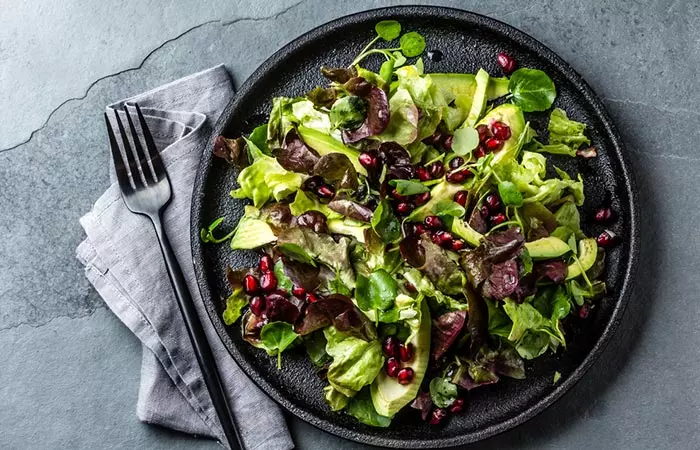
Due to its tenderness, watercress sautés faster than most other greens. It also imparts a mild spice and tang to any dish it is added to. You can incorporate this veggie into your diet in the following ways:
- Toss it into a salad. Include watercress in your evening vegetable salad. You can also eat it along with a delectable dash of pepper.
- Add it to your wrap or sandwich. You can complement this with grilled cheese.
- Add it to your breakfast omelet or egg scramble.
- Include watercress in your morning vegetable juice.
- Blend it with pine nuts, garlic, and olive oil to prepare watercress pesto.
- You can blend and include it in dips, spreads, or pasta sauce.
- Add it to your stir-fries for a unique flavor.
- Blend it into your favorite fruit juice or smoothies.
 Quick Tip
Quick TipThere is nothing that should stop you from eating watercress every day. But before you do that, you ought to know the potential adverse effects this vegetable may cause.
What Are The Potential Side Effects Of Watercress?
- May Interfere With Thyroid Health
Most cruciferous vegetables, including watercress, contain compounds called goitrogens that may interfere with iodine metabolism. Iodine is a nutrient essential for thyroid health, and this interference may cause thyroid issues (23).
Individuals with thyroid issues may have to limit their intake of watercress (and other cruciferous vegetables) and consult their doctor.
- May Aggravate Kidney Disease

Watercress contains potassium, though only in low amounts. Excess potassium may aggravate kidney disease (24). If you are dealing with kidney issues, please check with your doctor before adding watercress to your diet. Your doctor may suggest you to limit consumption and even advise you on the right dosage.
- Insufficient Information On Its Effects During Pregnancy And Breastfeeding
There is less information available on the safety of watercress during pregnancy and breastfeeding. Hence, please check with your doctor before you include vegetables in your diet.
 Trivia
TriviaAs with other fresh vegetables, it is important to store watercress properly to keep it fresh. Find out more in the next section.
How To Store Watercress?
Watercress is a highly perishable leafy green. You may follow these tips to keep its freshness and flavor intact:
- Trim out discolored or wilted leaves and tough stems when you bring them from the market.
- Rinse them thoroughly under running water to get rid of the dirt.
- Place them on paper towels to remove excess moisture. They should be completely dry before you store them away.
- Seal them in an airtight plastic bag or a container lined with paper towels. Leave some space for air circulation and place them in the refrigerator.
- Keep the refrigerator temperature approximately between 32 to 34°F or 0 to 1°C for prolonged freshness.
- Consume them within 2 to 3 days of purchase to enjoy their flavors.
Infographic: Benefits Of Watercress
Watercress is an aquatic vegetable loaded with many beneficial nutrients. If included as part of the diet, it offers an array of health benefits. The following infographic provides a clear idea about the benefits of watercress. Check it out. Illustration: StyleCraze Design Team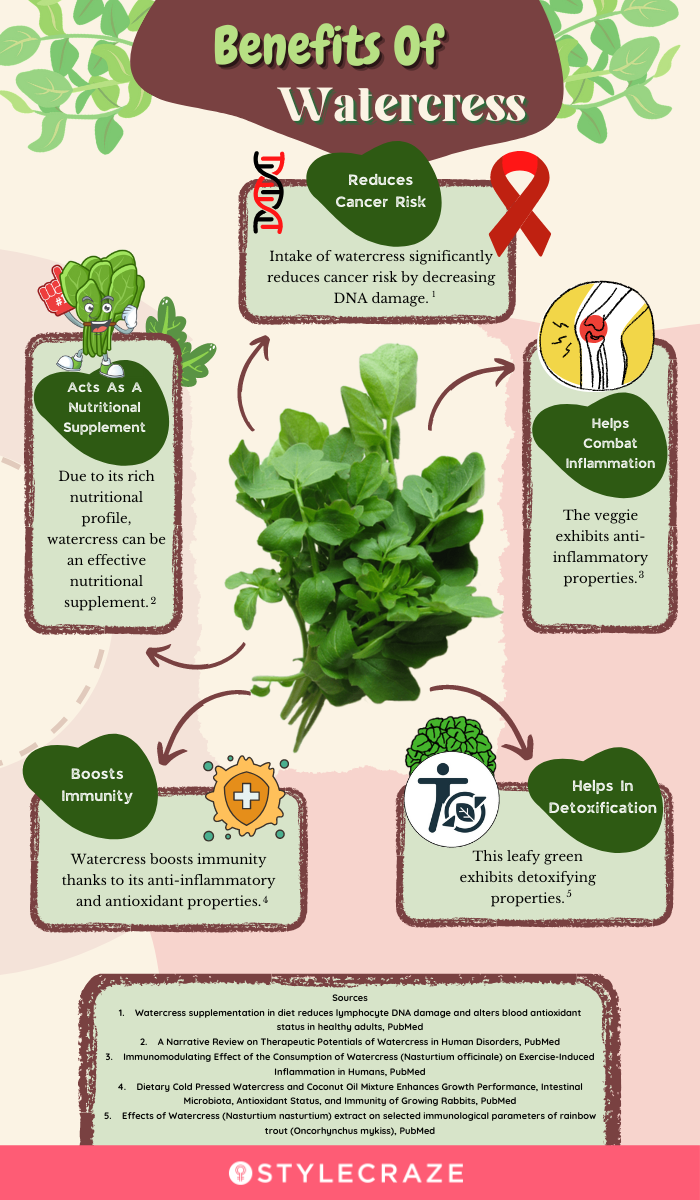
The watercress is a leafy green with a rich nutritional profile. It is high in antioxidants and low in calories. The benefits of watercress are numerous. The intake of watercress may aid cancer prevention, promote heart health, help treat diabetes, enhance bone health, boost immune system function, and improve athletic performance. You can add this leafy green easily to your diet by tossing it into your favorite salad or adding it to vegetable juice. However, excess intake of watercress may interfere with thyroid health and aggravate kidney disease. Hence, limit its consumption and consult your doctor in case of any emergencies.
Frequently Asked Questions
What is the right dosage of watercress?
The right dosage of watercress depends on the user’s health condition, age, and other factors. There is little information on the appropriate dosage of watercress. Your doctor can guide you better.
Can you eat watercress raw?
Yes, you can eat watercress raw, but it may taste a little bitter. You can toss raw watercress into your vegetable salad. It improves digestion and helps the body in detoxification (26).
Can you freeze fresh watercress?
Yes, you can freeze fresh watercress. This works best if you use the veggie in a soup or a smoothie or any other cooked recipe.
Can you eat the watercress stalks?
Yes. In fact, the entire plant is edible. You can eat its leaves, its stalks, and even the plant’s flowers. You may discard the roots, though, as they don’t taste great.
What does watercress taste like?
Raw watercress has a peppery taste. Once cooked, you get to enjoy its distinctive vegetable flavor.
Illustration: Health Benefits Of Watercress, Nutrition, And Side Effects
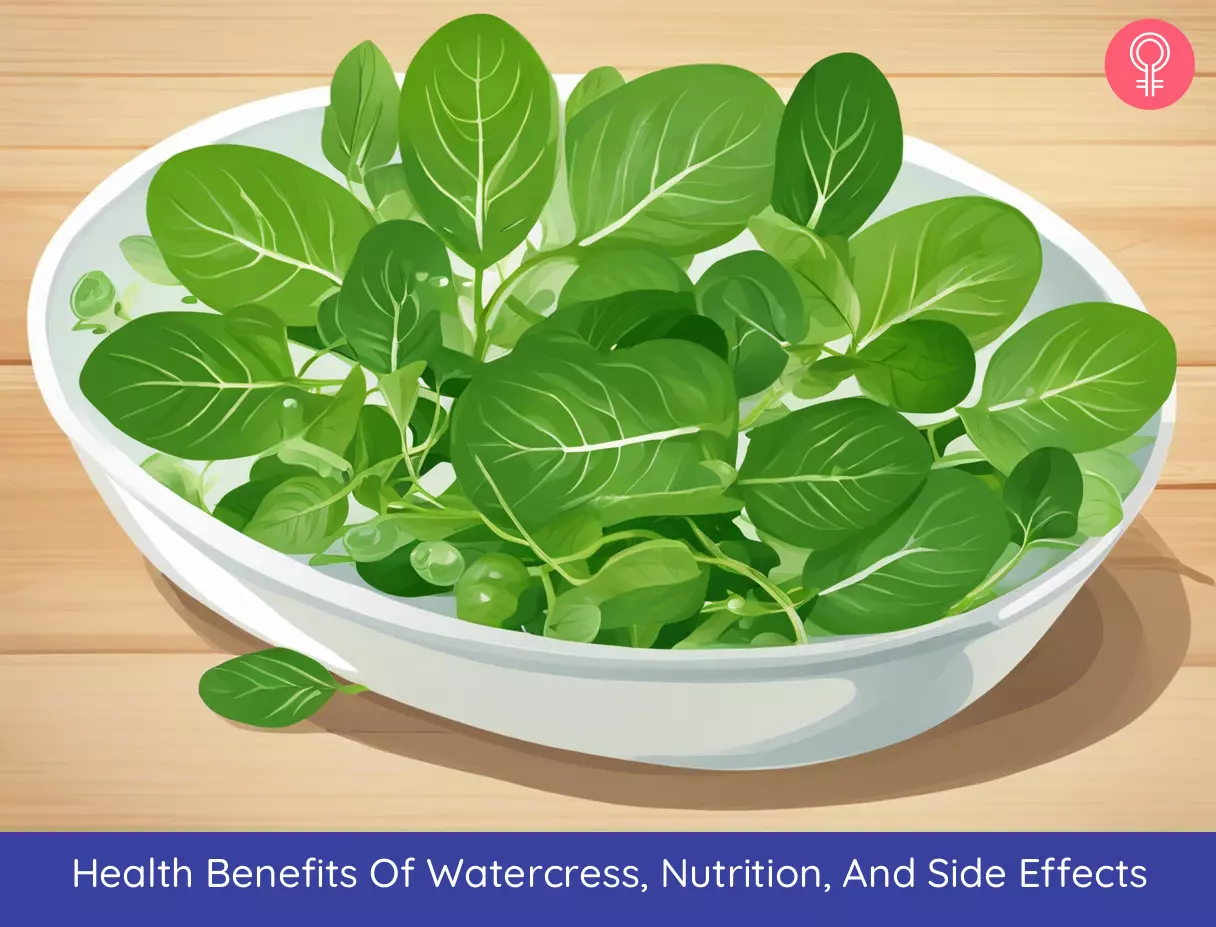
Image: Stable Diffusion/StyleCraze Design Team
References
Articles on StyleCraze are backed by verified information from peer-reviewed and academic research papers, reputed organizations, research institutions, and medical associations to ensure accuracy and relevance. Read our editorial policy to learn more.
- Phenolic profile and antioxidant potential of wild watercress (Nasturtium officinale L.), SpringerPlus, US National Library of Medicine, National Institutes of Health.
https://www.ncbi.nlm.nih.gov/pmc/articles/PMC4656250/ - Defining Powerhouse Fruits and Vegetables: A Nutrient Density Approach, Centers for Disease Control and Prevention.
https://www.cdc.gov/pcd/issues/2014/13_0390.htm#table2_down - Role of reactive oxygen intermediates in cellular responses to dietary cancer chemopreventive agents, Planta Medica, US National Library of Medicine, National Institutes of Health.
https://pubmed.ncbi.nlm.nih.gov/18671201/ - In vivo modulation of 4E binding protein 1 (4E-BP1) phosphorylation by watercress: a pilot study, Cambridge University Press
https://www.cambridge.org/core/journals/british-journal-of-nutrition/article/in-vivo-modulation-of-4e-binding-protein-1-4ebp1-phosphorylation-by-watercress-a-pilot-study/68C7C283FB1A7001507A495707697CE6 - Effects of watercress consumption on metabolism of a tobacco-specific lung carcinogen in smokers, Cancer Epidemiology, Biomarkers, & Prevention, US National Library of Medicine, National Institutes of Health.
https://pubmed.ncbi.nlm.nih.gov/8634661/ - Metabolic targets of watercress and PEITC in MCF-7 and MCF-10A cells explain differential sensitisation responses to ionising radiation, European Journal of Nutrition, US National Library of Medicine, National Institutes of Health.
https://pubmed.ncbi.nlm.nih.gov/30066177/ - A Comparison of Risk and Protective Factors for Colorectal Cancer in the Diet of New Zealand Maori and non-Maori, Asian Pacific Journal of Cancer Prevention, US National Library of Medicine, National Institutes of Health.
https://pubmed.ncbi.nlm.nih.gov/12716290/ - The effect of green leafy and cruciferous vegetable intake on the incidence of cardiovascular disease: A meta-analysis, JRSM Cardiovascular Disease, US National Library of Medicine, National Institutes of Health.
https://pubmed.ncbi.nlm.nih.gov/27540481/ - Vascular effects of dietary nitrate (as found in green leafy vegetables and beetroot) via the nitrate-nitrite-nitric oxide pathway, British Journal of Clinical Pharmacology, US National Library of Medicine, National Institutes of Health.
https://pubmed.ncbi.nlm.nih.gov/22882425/ - Effect of hydroalcoholic extracts of Nasturtium officinale leaves on lipid profile in high-fat diet rats, Journal of Ethnopharmacology, US National Library of Medicine, National Institutes of Health.
https://pubmed.ncbi.nlm.nih.gov/17980985/ - Effects of Hydroalcoholic Extract of Watercress (Nasturtium Officinale) Leaves on Serum Glucose and Lipid Levels in Diabetic Rats, Indian Journal of Physiology and Pharmacology, US National Library of Medicine, National Institutes of Health.
https://pubmed.ncbi.nlm.nih.gov/26685512/ - Say NO to disease, Oregon State University.
http://extension.oregonstate.edu/sites/extd8/files/documents/8836/asay-no-disease-handout.pdf - Effects of Watercress Containing Rutin and Rutin Alone on the Proliferation and Osteogenic Differentiation of Human Osteoblast-like MG-63 Cells, The Korean Journal of Physiology & Pharmacology, US National Library of Medicine, National Institutes of Health.
https://www.ncbi.nlm.nih.gov/pmc/articles/PMC4146638/ - Vitamin K and bone, Clinical Cases in Mineral and Bone Metabolism, US National Library of Medicine, National Institutes of Health.
https://www.ncbi.nlm.nih.gov/pmc/articles/PMC5726210/ - Effects of Watercress (Nasturtium nasturtium) extract on selected immunological parameters of rainbow trout (Oncorhynchus mykiss), Open Veterinary Journal, US National Library of Medicine, National Institutes of Health.
https://www.ncbi.nlm.nih.gov/pmc/articles/PMC4655775/ - Effect of Watercress (Nasturtium officinale L.) powder on performance and immune response of broilers, ResearchGate.
https://www.researchgate.net/publication/262209085_Effect_of_Watercress_Nasturtium_officinale_L_powder_on_performance_and_immune_response_of_broilers - Technical advance: ascorbic acid induces development of double-positive T cells from human hematopoietic stem cells in the absence of stromal cells, Journal of Leukocyte Biology, US National Library of Medicine, National Institutes of Health.
https://pubmed.ncbi.nlm.nih.gov/25157026/ - Phenolic profile and antioxidant potential of wild watercress (Nasturtium officinale L.)
https://www.ncbi.nlm.nih.gov/pmc/articles/PMC4656250/ - Nitrate ingestion: a review of the health and physical performance effects Nutrients US National Library of Medicine National Institutes of Health.
https://pubmed.ncbi.nlm.nih.gov/25412154/ - Moderate dose of watercress and red radish does not reduce oxygen consumption during graded exhaustive exercise Avicenna Journal of Phytomedicine US National Library of Medicine National Institutes of Health.
https://www.ncbi.nlm.nih.gov/pmc/articles/PMC4110783/ - Nasturtium officinale R. Br. effectively reduces the skin inflammation induced by croton oil via glucocorticoid receptor-dependent and NF-κB pathways without causing toxicological effects in mice Journal of Ethnopharmacology US National Library of Medicine National Institutes of Health.
https://pubmed.ncbi.nlm.nih.gov/30339978/ - What Do Specific Foods Do? University of Minnesota.
https://www.takingcharge.csh.umn.edu/what-do-specific-foods-do - From chemo-prevention to epigenetic regulation: The role of isothiocyanates in skin cancer prevention Pharmacology & Therapeutics US National Library of Medicine National Institutes of Health.
https://pubmed.ncbi.nlm.nih.gov/29890115/ - Effects of low-carbohydrate diet therapy in overweight subjects with autoimmune thyroiditis: possible synergism with ChREBP Drug Design Development and Therapy US National Library of Medicine National Institutes of Health.
https://www.ncbi.nlm.nih.gov/pmc/articles/PMC5028075/ - Potassium and Your CKD Diet National Kidney Foundation.
https://www.kidney.org/kidney-topics/potassium-your-ckd-diet - A Narrative Review on Therapeutic Potentials of Watercress in Human Disorders
https://www.ncbi.nlm.nih.gov/pmc/articles/PMC8123986/
Read full bio of Tracy Tredoux
Read full bio of Ravi Teja Tadimalla
Read full bio of Arshiya Syeda
Read full bio of Sindhu Koganti






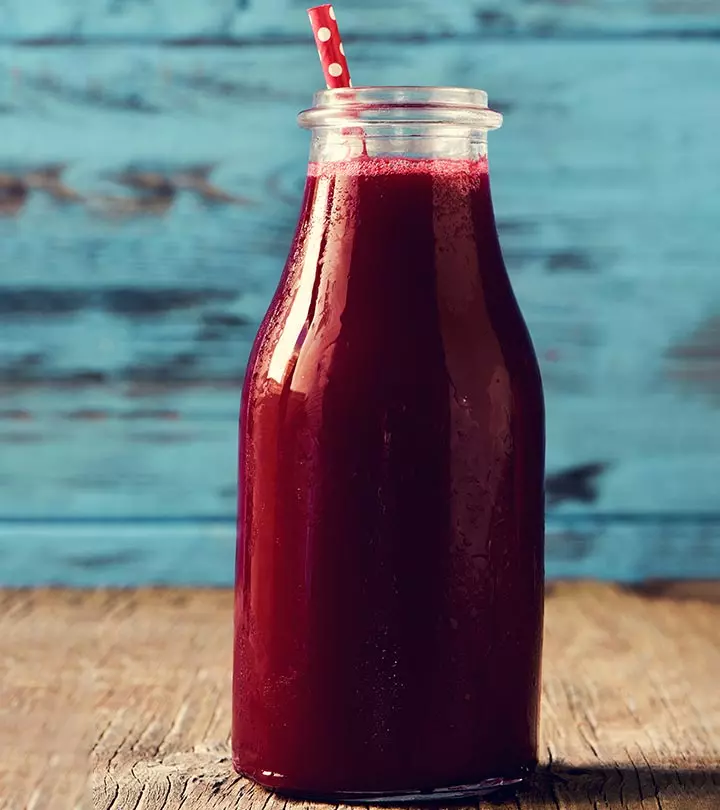
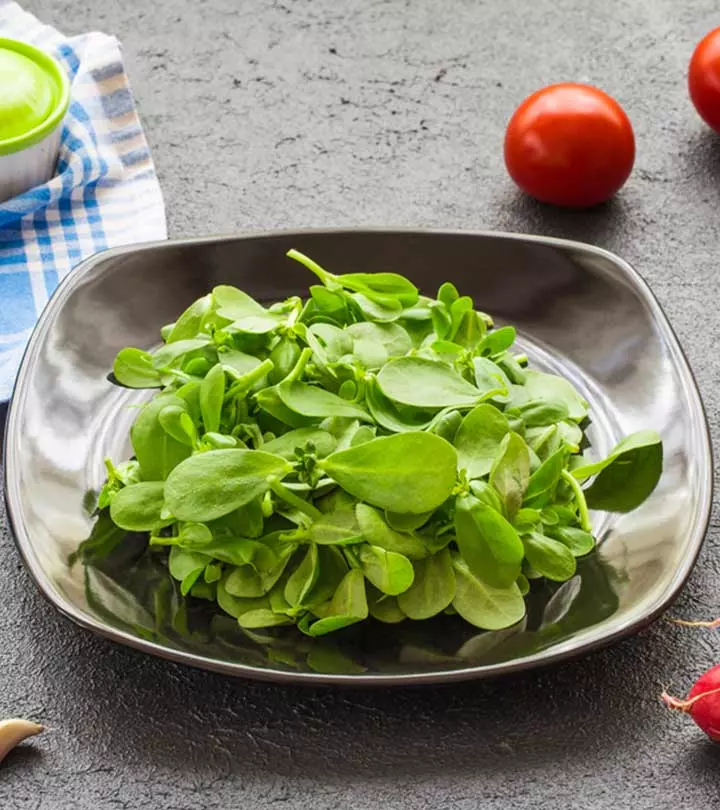
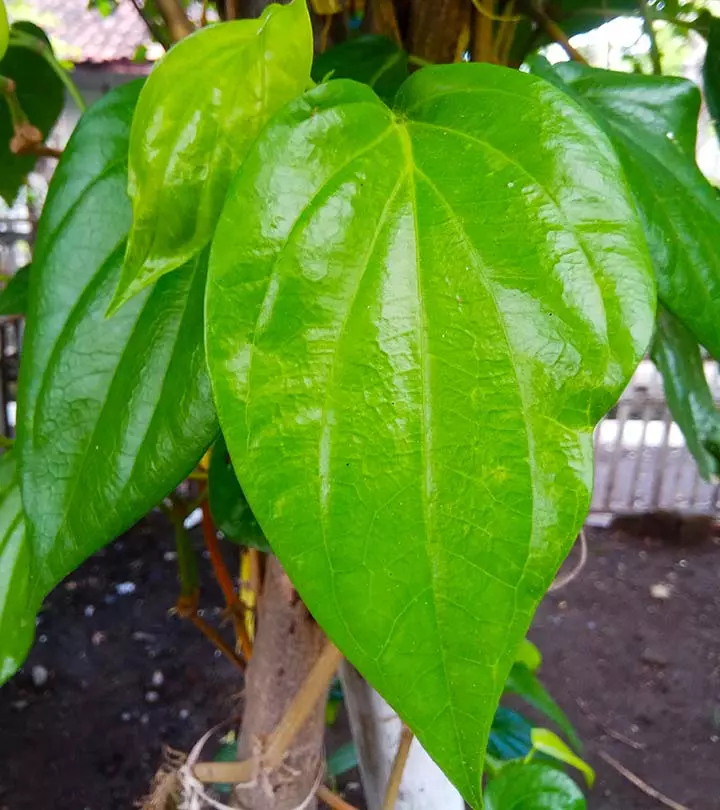
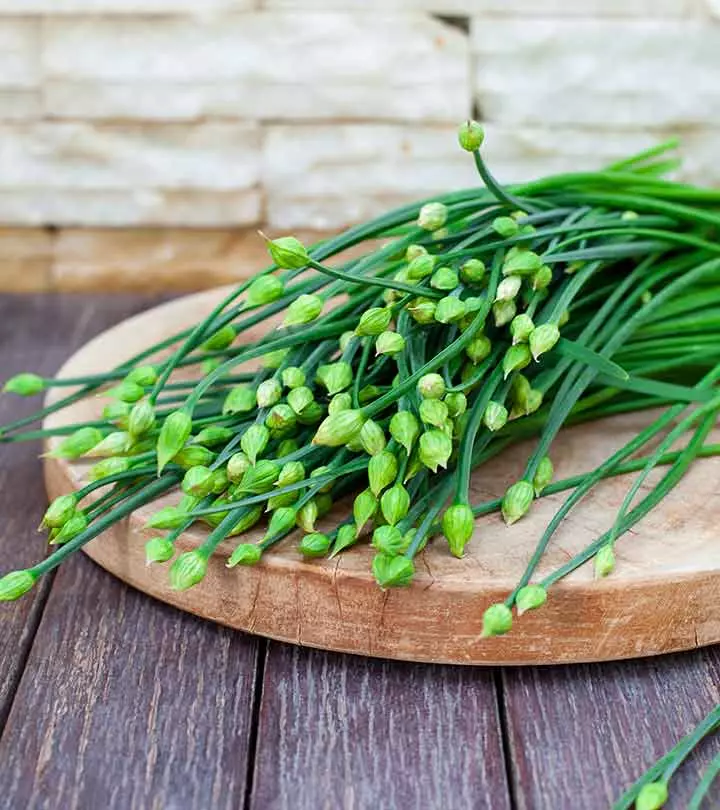
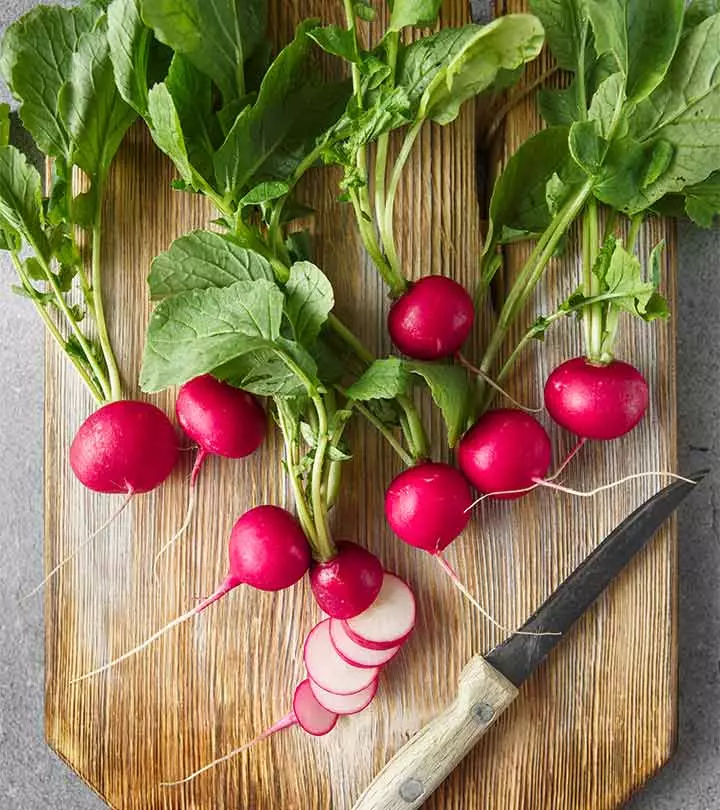
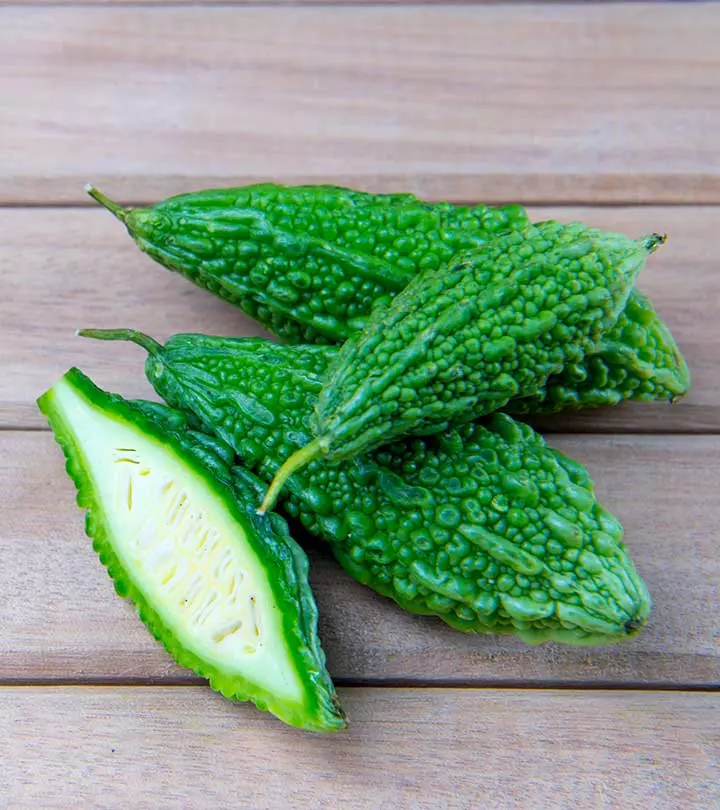
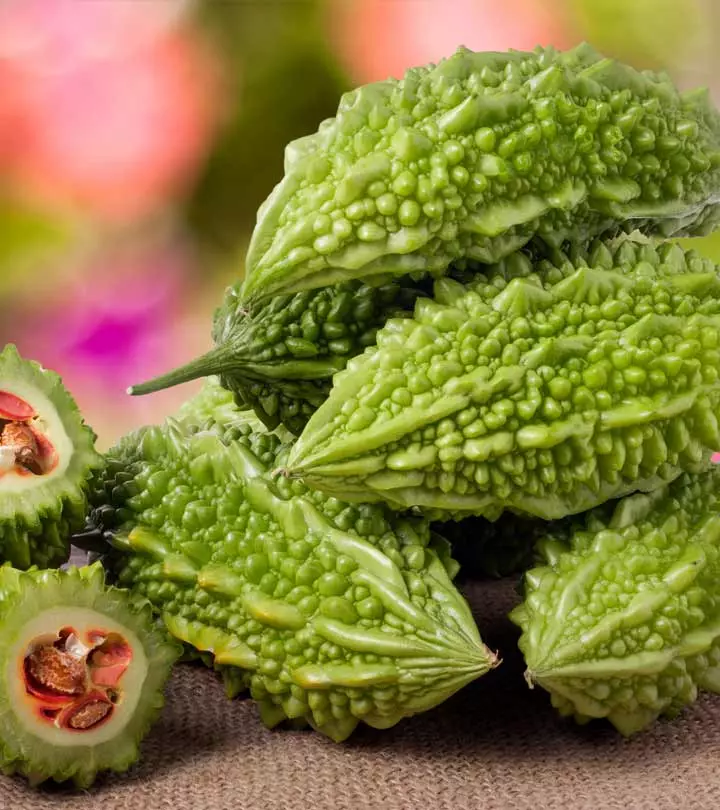
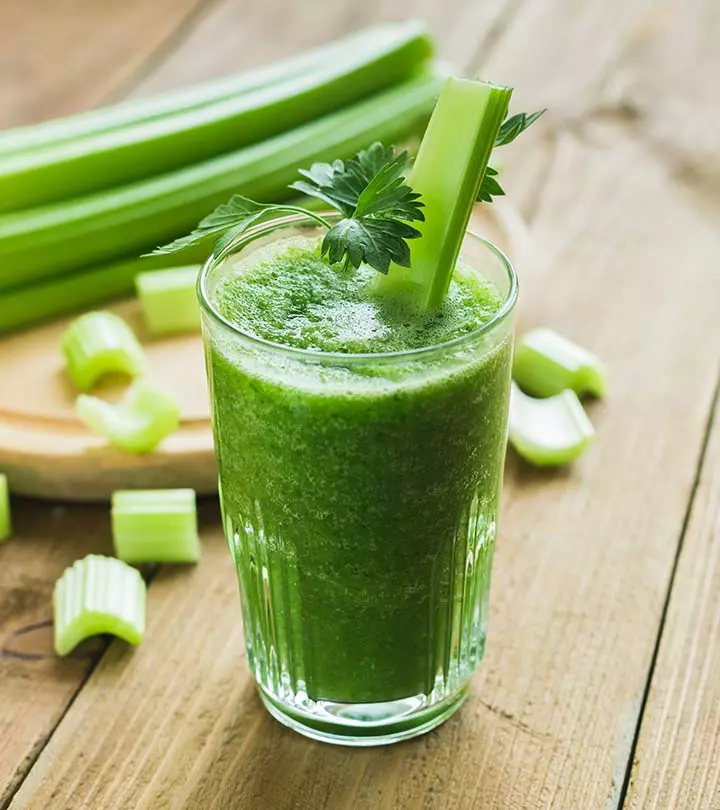
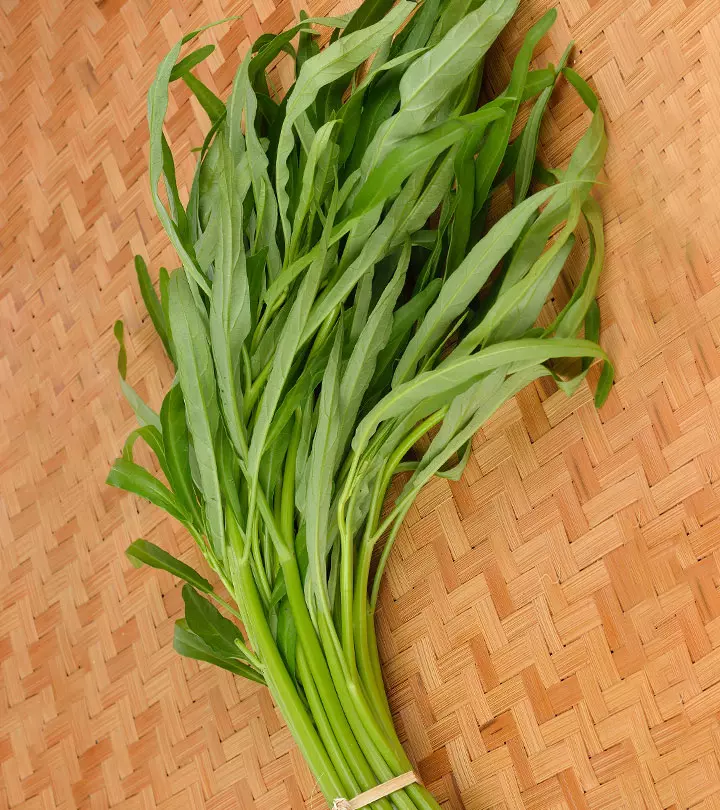
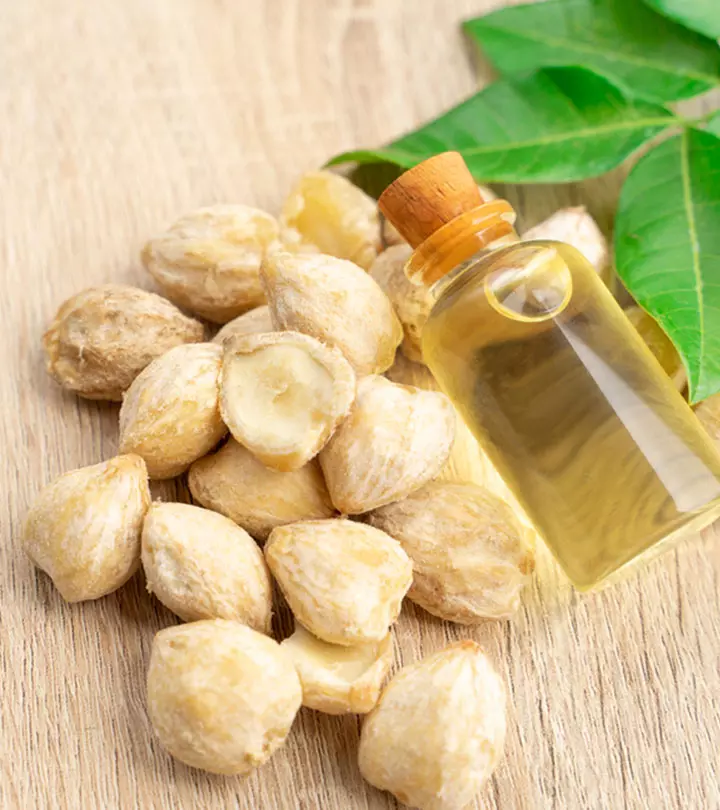
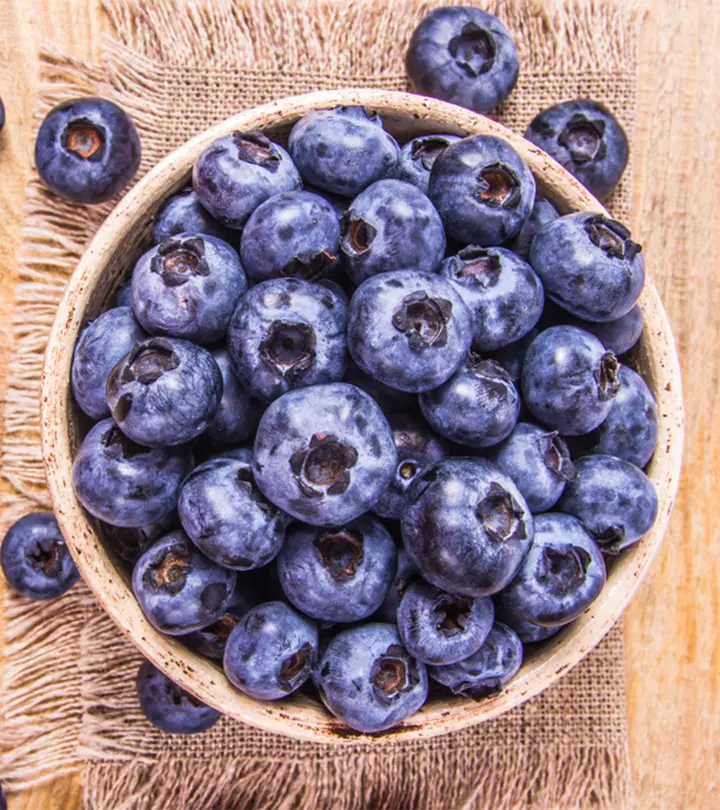
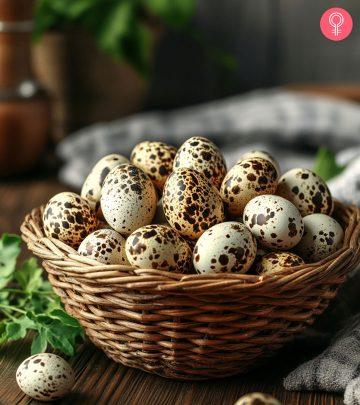
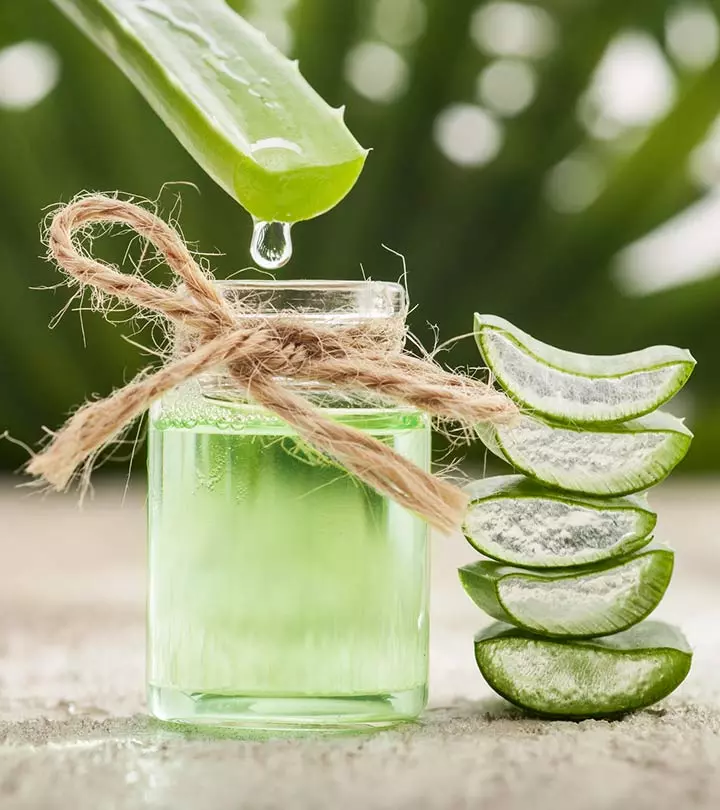

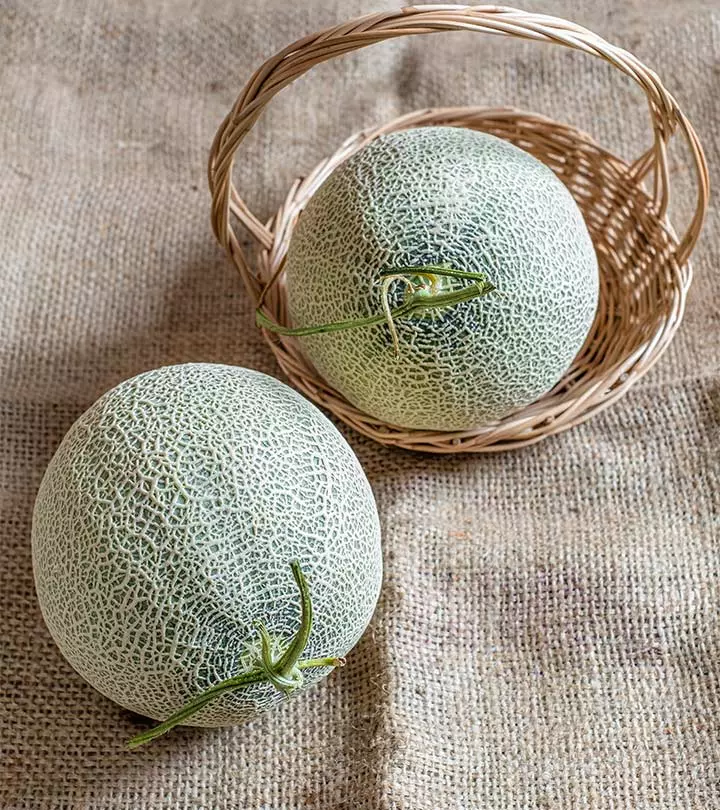
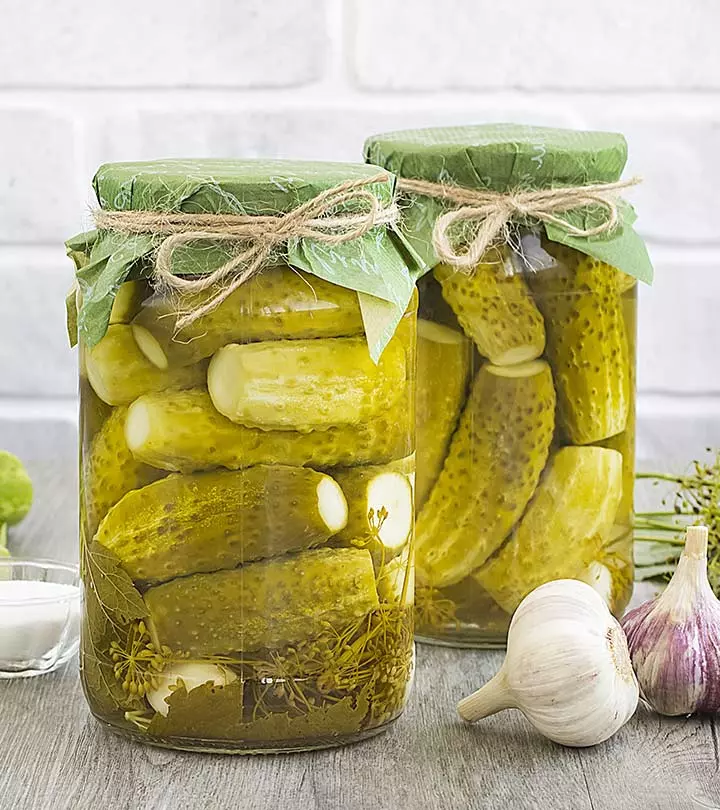


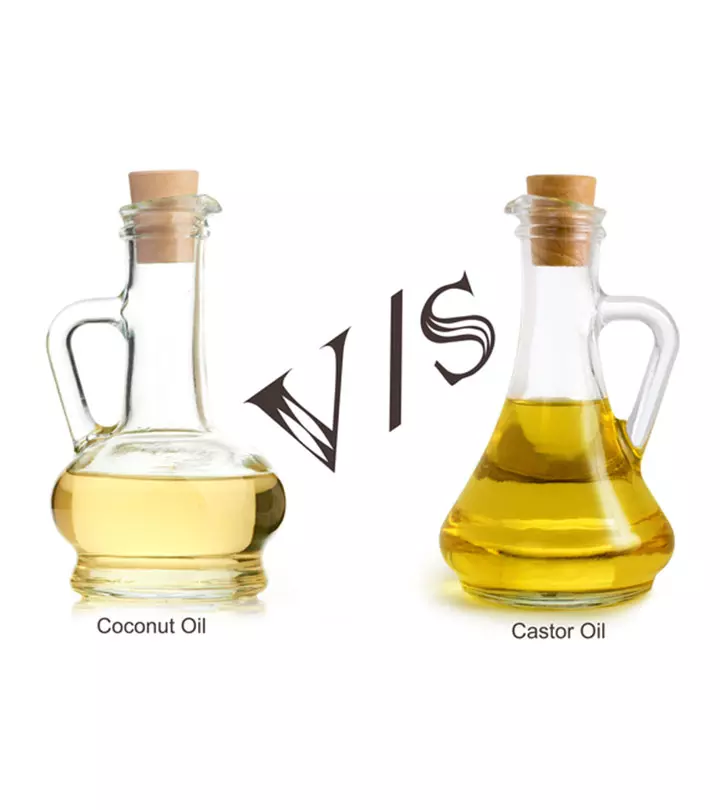
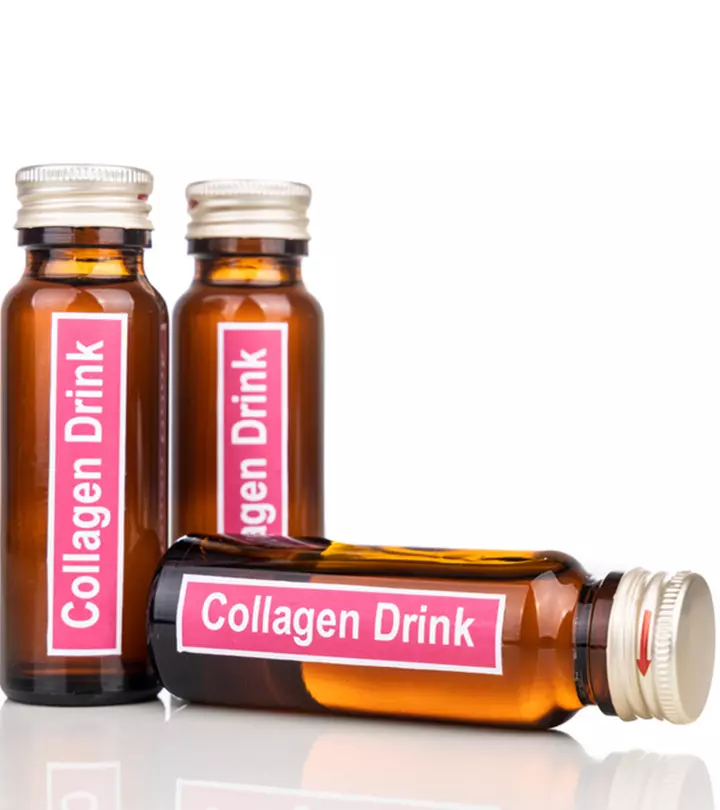
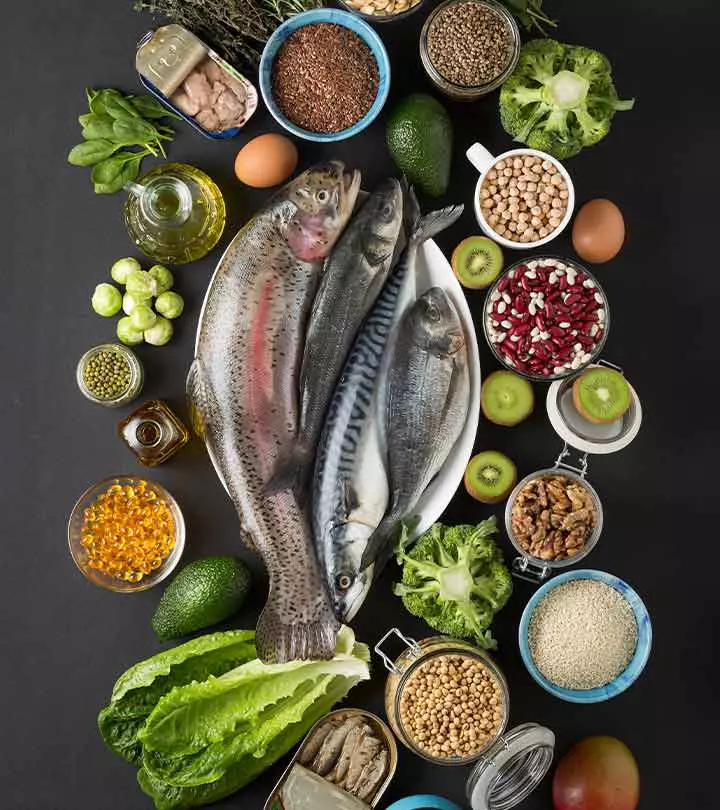
Community Experiences
Join the conversation and become a part of our empowering community! Share your stories, experiences, and insights to connect with other beauty, lifestyle, and health enthusiasts.